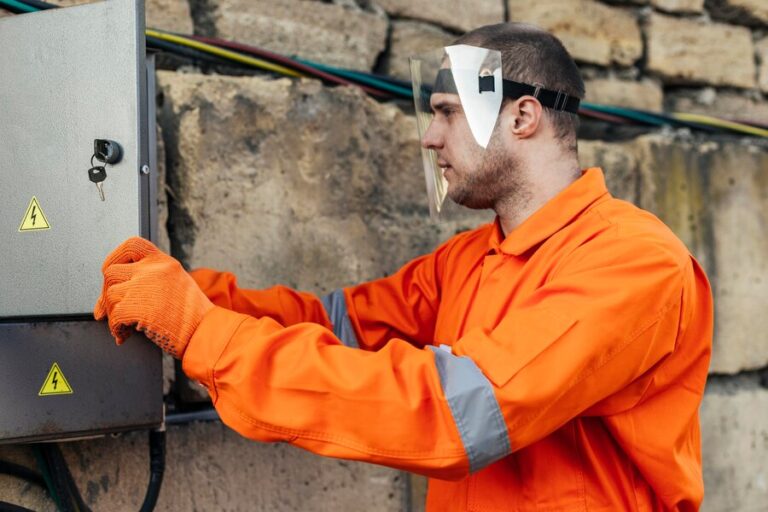If you live in a rural area or a home not connected to a municipal sewer system, chances are you have a septic system. Understanding how does a septic system work is crucial for maintaining a healthy and functional system. In this comprehensive guide, we’ll explore the inner workings of septic systems and provide you with valuable information to keep your system running smoothly.
So, how does a septic system work?
How Do Septic Systems Work?
If you’re a new homeowner or property owner navigating the waste management system, you might ask: How do septic systems work?
A septic system is an underground wastewater treatment system that processes and disposes of household waste. The system relies on natural processes and proven technology to treat wastewater from household plumbing, including bathrooms, kitchen drains, and laundry.
The two main components of a septic system are:
- Septic Tank: A watertight container that receives and partially treats wastewater.
- Drain Field: A subsurface area where the partially treated wastewater is released and filtered by the soil.
These components work together to ensure that wastewater is effectively treated and safely returned to the environment.
The Septic Tank: The Heart of the System
The septic tank is the first stop for wastewater leaving your home. It is a large, buried container typically made of concrete, fiberglass, or polyethylene. The tank is designed to hold wastewater long enough for solids to settle to the bottom (forming sludge) and oils and greases to float to the top (forming scum).
The septic tank is divided into two compartments. The first compartment is where the majority of the solids settle and is known as the primary treatment area. The second compartment, known as the secondary treatment area, allows for additional settlement and provides a buffer between the primary treatment area and the drain field.
As new wastewater enters the tank, it displaces the partially treated wastewater, which then flows into the second compartment and eventually out to the drain field. Bacteria in the tank break down the solid waste, helping to reduce the amount of sludge that accumulates over time.
The Drain Field: Where the Magic Happens
After the wastewater has been partially treated in the septic tank, it flows to the drain field. The drain field is a shallow, covered excavation made in unsaturated soil. Pre-treated wastewater is discharged through piping onto porous surfaces that allow the wastewater to filter through the soil.
The drain field is typically composed of a series of trenches containing perforated pipes and porous material (like gravel). The pipes are then covered by a layer of soil to prevent animals and surface runoff from entering the trenches.
As the wastewater percolates through the soil, it is further treated by naturally occurring microbes and filtered by the soil particles. These processes remove harmful bacteria, viruses, and nutrients, effectively treating the wastewater before it reaches groundwater.
The size and design of the drain field depend on the volume of wastewater generated and the soil conditions at the site. Proper maintenance of the drain field is crucial to ensure the longevity and effectiveness of the septic system.
Maintaining Your Septic System
To ensure your septic system functions properly, regular maintenance is essential.
Here are some tips to keep in mind:
- Pump your septic tank every 3-5 years, depending on the size of your tank and household size.
- Avoid flushing non-biodegradable items, such as wipes, dental floss, and cigarette butts.
- Conserve water to reduce the strain on your septic system.
- Keep vehicles and livestock away from the drain field to prevent soil compaction.
- Avoid planting trees or shrubs with deep roots near the drain field, as they can damage the pipes.
Signs of Septic System Failure
Knowing the signs of a failing septic system can help you address problems before they escalate. Watch out for:
- Foul odors near the septic tank or drain field
- Slow draining or gurgling toilets and sinks
- Standing water or wet spots in the drain field
- Sewage backup in your home
If you notice any of these signs, contact a professional septic system service provider immediately.
How often should I pump my septic tank?
The frequency of septic tank pumping depends on several factors, such as the size of your tank, the number of people in your household, and the amount of wastewater generated. Generally, it is recommended to pump your septic tank every 3-5 years. However, if you have a larger household or use more water than average, you may need to pump more frequently. It’s crucial to monitor your septic system and schedule pumping when the sludge and scum layers accumulate to about one-third of the tank’s capacity.
What should I avoid flushing down the toilet or drains to protect my septic system?
To maintain a healthy septic system, avoid flushing non-biodegradable items such as:
- Wet wipes (even those labeled “flushable”)
- Diapers
- Feminine hygiene products
- Condoms
- Cigarette butts
- Dental floss
- Cotton swabs
- Paper towels
- Harsh chemicals (bleach, paint, pesticides)
- Cooking oils or grease These items can clog your pipes, disrupt the delicate balance of bacteria in your septic tank, and lead to system failure.
Can I use septic tank additives to improve the performance of my system?
The use of septic tank additives is generally not recommended. Most septic systems work effectively without additives if properly maintained. Some additives can even harm your septic system by disrupting the natural bacterial balance in the tank. Instead of relying on additives, focus on regular maintenance, such as pumping your tank as needed and being mindful of what you flush down your drains.
How can I tell if my septic system is failing?
Signs of a failing septic system include:
- Foul odors near the septic tank or drain field
- Slow draining or gurgling toilets and sinks
- Sewage backup in your home
- Standing water or wet spots in the drain field
- Lush, green grass growing over the drain field (indicating excessive nutrient release) If you notice any of these signs, contact a professional septic system service provider immediately to assess the situation and make necessary repairs.
Can I plant trees or install a garden over my drain field?
It is not recommended to plant trees or install gardens directly over your drain field. Tree roots can grow into the perforated pipes, causing blockages and damage. Additionally, the extra water from irrigation can overload the drain field, leading to system failure. If you wish to plant near your drain field, choose shallow-rooted plants and keep them at least 20 feet away from the edge of the field. Grass is the best cover for your drain field, as it helps prevent erosion and removes excess water through transpiration.
Conclusion
Now that you understand how does a septic system work, you can better appreciate the importance of proper maintenance and care. By following the tips outlined in this guide and staying vigilant for signs of trouble, you can ensure that your septic system continues to function effectively for years to come.







